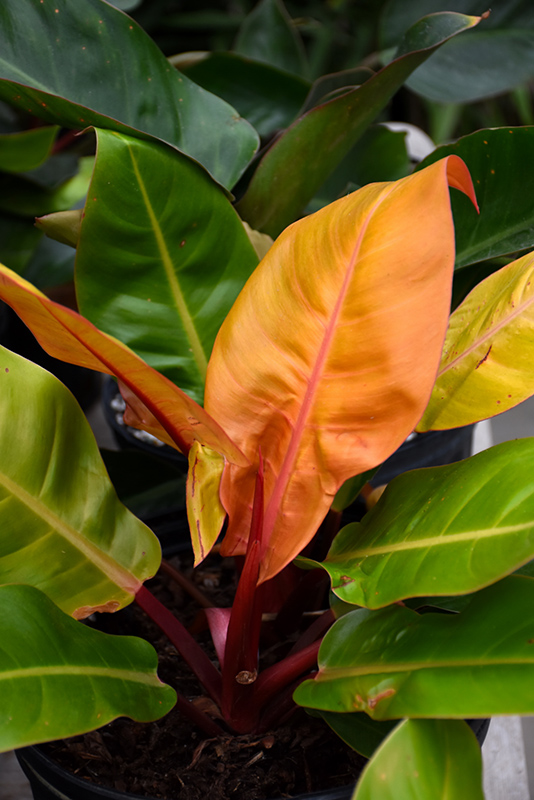Plant Finder
Prismacolor™ Prince of Orange Philodendron
Philodendron 'Prince of Orange'
Height: 24 inches
Spread: 3 feet
Sunlight:
![]()
![]()
Group/Class: Leafjoy Houseplants
Brand: Proven Winners
Description:
A vibrant variety with ever-changing leaves; yellowish new growth changes to a bronzy-copper color then settles into a darker green; an upright plant with no need of support; great for indoor containers as a tropical accent
Features & Attributes
Prismacolor™ Prince of Orange Philodendron's attractive glossy oval leaves emerge yellow, turning green in color with showy coppery-bronze variegation and tinges of orange throughout the year on a plant with an upright spreading habit of growth. The red stems are very effective and add to the plant's interest.
This is a dense herbaceous evergreen houseplant with an upright spreading habit of growth. This plant should not require much pruning, except when necessary to keep it looking its best.
Planting & Growing
When grown indoors, Prismacolor™ Prince of Orange Philodendron can be expected to grow to be about 24 inches tall at maturity, with a spread of 3 feet. It grows at a medium rate, and under ideal conditions can be expected to live for approximately 10 years. This houseplant performs well in both bright or indirect sunlight and strong artificial light, and can therefore be situated in almost any well-lit room or location. It prefers to grow in average to moist soil. The surface of the soil shouldn't be allowed to dry out completely, and so you should expect to water this plant once and possibly even twice each week. Be aware that your particular watering schedule may vary depending on its location in the room, the pot size, plant size and other conditions; if in doubt, ask one of our experts in the store for advice. It will benefit from a regular feeding with a general-purpose fertilizer with every second or third watering. It is not particular as to soil type or pH; an average potting soil should work just fine. Be warned that parts of this plant are known to be toxic to humans and animals, so special care should be exercised if growing it around children and pets.
There are many factors that will affect the ultimate height, spread and overall performance of a plant when grown indoors; among them, the size of the pot it's growing in, the amount of light it receives, watering frequency, the pruning regimen and repotting schedule. Use the information described here as a guideline only; individual performance can and will vary. Please contact the store to speak with one of our experts if you are interested in further details concerning recommendations on pot size, watering, pruning, repotting, etc.
-- THIS IS A HOUSEPLANT AND IS NOT MEANT TO SURVIVE THE WINTER OUTDOORS IN OUR CLIMATE --
Disclaimer - Rutgers Landscape & Nursery Plant Finder is an online resource representing many of the varieties that we carry over the course of the season, and is intended for informational purposes only. Inventory varies seasonally, so we cannot guarantee that every plant will be in stock at all times - please contact Rutgers directly for current availability.

